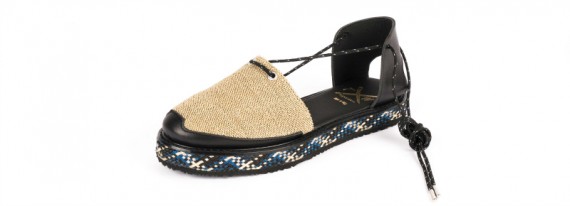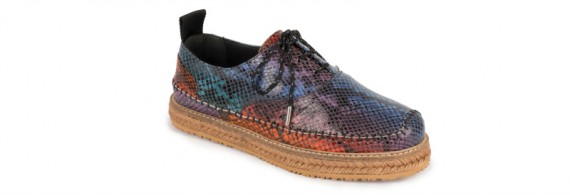Fashion has among its features to be temporary. It is an instant. And not all brands are good at exploiting the luck resulting from the passage of a fleeting taste to a color, an accessory or a clothe that makes a trend. Farewell Footwear goes in this direction since 2013, when it has founded its production on one garment, or rather a single shoe type: the espadrillas. Its founders, Marta Bagante, Giulia Bison and Federico Grassi, friends among the design school desks, answer questions about why they focused on the accessory of this season and the evolutions they foresee for the future of their creative reality.
Guys, you founded Farewell Footwear four years ago, how did you choose this brand name?
Farewell is a game of imagination: it means taking two words, putting them together, getting a new one, and starting to use it to express what we do. Farewell, however, was born for evasion and means to say goodbye to many things: to boredom, to winter, to the vintage espadrillas from which everything started. In the end it was also a dismissal from the office, looking for our way.
Your espadrillas are a mixture of vintage and contemporary. Where does these two aspects emerge?
Our research is based on random combinations of the past, present and future. It is normal, therefore, to find references to varied environments and dimensions that occur in the use of extravagant laces and inserts but also unusual shapes and colors. Vintage and contemporary combine in the recovery of a “poor” craft tradition that finds new life with innovative materials and tailoring details.
You have chose to produce unisex collections, is it an adaptation to the aesthetic trends of the moment or is it a response to a personal need?
The idea was actually born out of a factual statement: espadrillas are a practical, gender-less product, loved by men and women. We wanted to think about ours not as a fashion product but rather as a design object, this diversity in the creative approach has allowed us to think of the shoe as a unisex product.
How do you split the work during the production phase and how does the latter work?
Thank to our personal training we are all equally involved in the creative stage, we like to work in tune and have brainstorming: the contribution of each of us is important. Then, for optimization purposes, you have to break the tasks. Usually only one of us goes to the factory to follow the production phase and advancements in the field, although it is one of the most interesting parts of this craft.
What are your projects for the future?
Today we are in a phase of great revolutions, and projects for the future are many. For some time we have been making an important change of route that involves the same positioning of the brand that becomes made in Italy and abandons its pop democratic nature to become more and more tailored. In terms of product we are expanding our horizons: espadrillas have been a very interesting starting point, which we certainly will not abandon in the future, but we are also eager to explore some specificities. We are focusing on using the strings applied to the upper to create a more experimental and even concise collection. Experimentation will be a constant for our future, and we want to approach the footwear industry with other “worlds” such as design (which is already a primary source of inspiration) with the goal of creating an iconic object for next season not necessarily to wear. A real piece of design.
More from Accessories
Vans X Horror: a scary collection
Less than a month to Halloween and for the occasion Vans brings back to life the most terrifying horror films …
Steetwear and Upcycling: this is how Tega Akinola revives Nike and Patagonia garments
Tega Akinola, with only 22 years and a degree from an undefined London college, has made a lot of talk …










